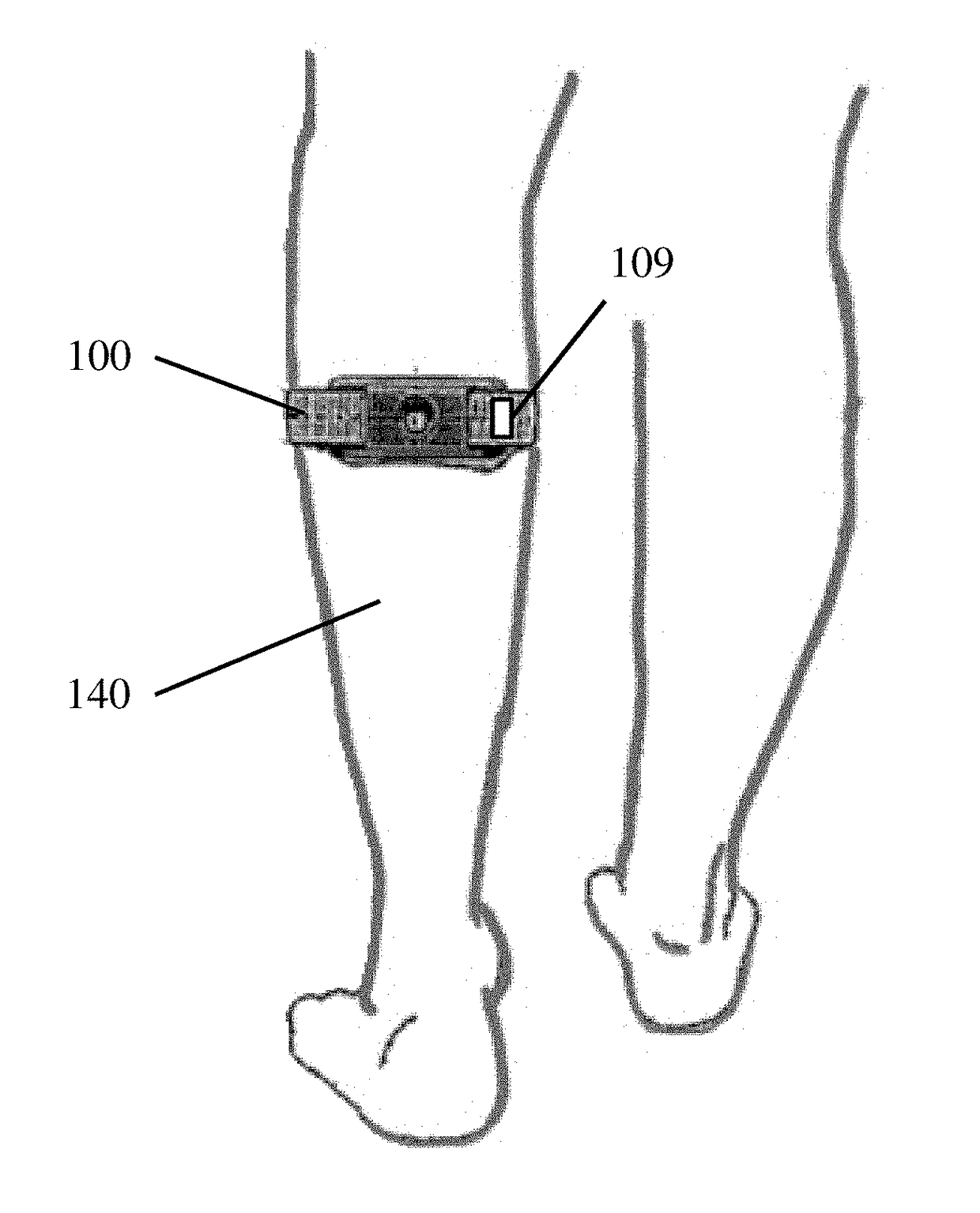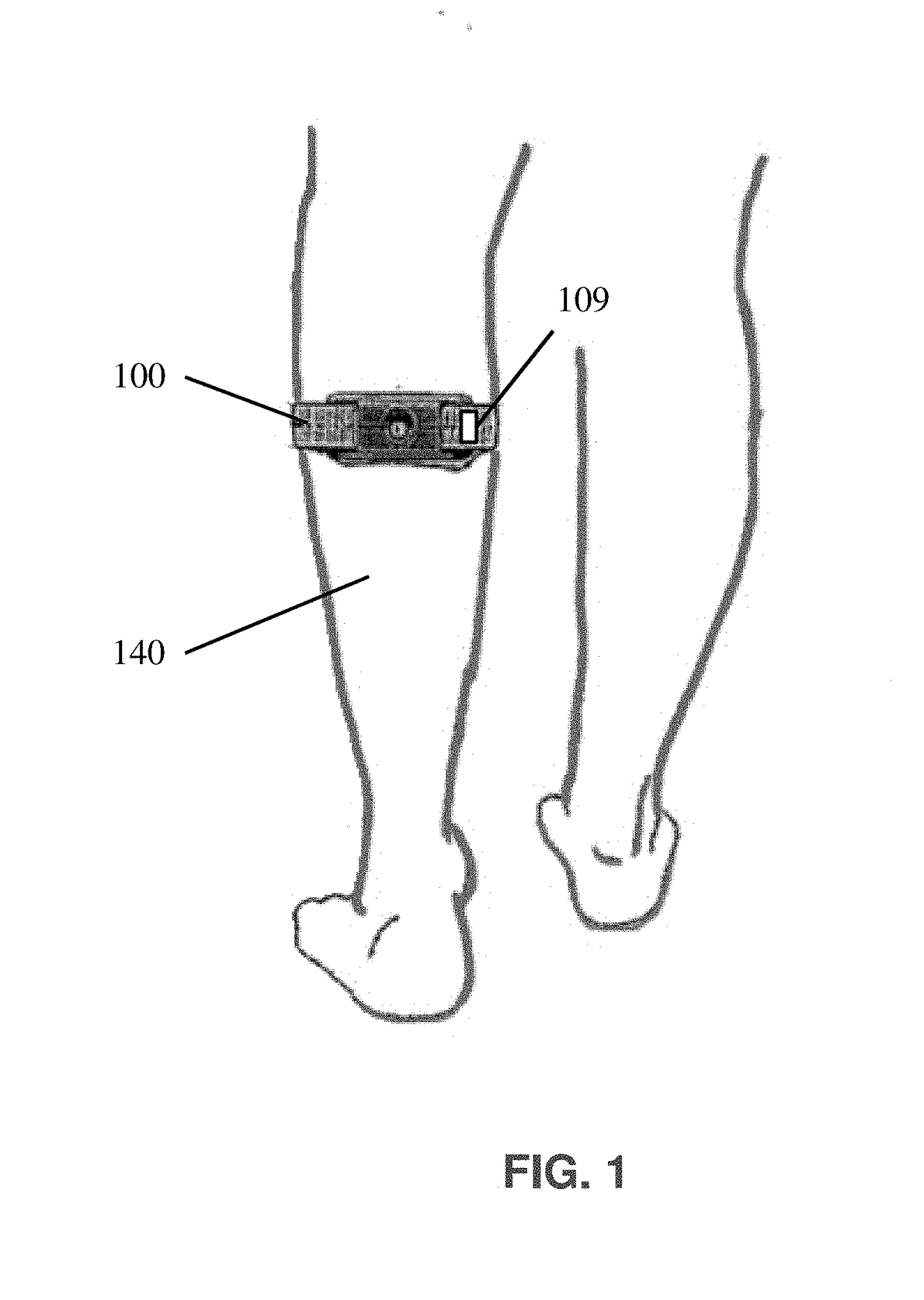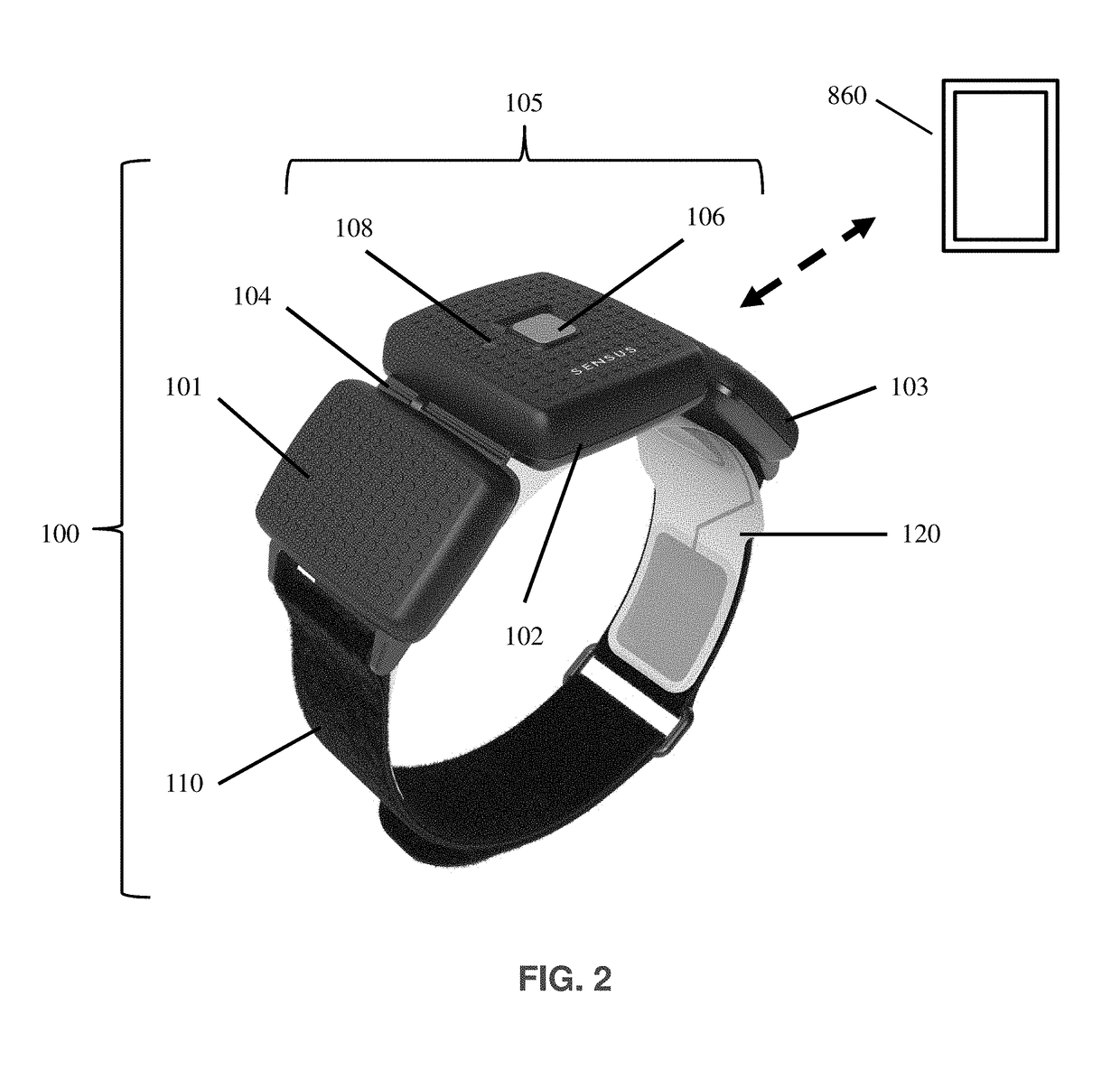Transcutaneous electrical nerve stimulator with automatic detection of leg orientation and leg motion for enhanced sleep analysis, including enhanced transcutaneous electrical nerve stimulation (TENS) using the same
- Summary
- Abstract
- Description
- Claims
- Application Information
AI Technical Summary
Benefits of technology
Problems solved by technology
Method used
Image
Examples
Embodiment Construction
The Novel TENS Device in General
[0070]FIG. 1 illustrates a novel TENS device 100 formed in accordance with the present invention, with the novel TENS device being shown worn on a user's upper calf 140. A user may wear TENS device 100 on either leg.
[0071]TENS device 100 is shown in greater detail in FIG. 2 and preferably comprises three primary components: a stimulator 105, a strap 110, and an electrode array 120 (comprising a cathode electrode and an anode electrode appropriately connected to stimulator 105 as is well known in the art). Stimulator 105 preferably comprises three mechanically and electrically inter-connected compartments 101, 102, and 103. Compartments 101, 102, 103 are preferably inter-connected by hinge mechanisms 104 (only one of which is shown in FIG. 2), thereby allowing TENS device 100 to conform to the curved anatomy of a user's leg. In a preferred embodiment of the present invention, compartment 102 houses the TENS stimulation circuitry (except for a battery) ...
PUM
 Login to View More
Login to View More Abstract
Description
Claims
Application Information
 Login to View More
Login to View More - R&D
- Intellectual Property
- Life Sciences
- Materials
- Tech Scout
- Unparalleled Data Quality
- Higher Quality Content
- 60% Fewer Hallucinations
Browse by: Latest US Patents, China's latest patents, Technical Efficacy Thesaurus, Application Domain, Technology Topic, Popular Technical Reports.
© 2025 PatSnap. All rights reserved.Legal|Privacy policy|Modern Slavery Act Transparency Statement|Sitemap|About US| Contact US: help@patsnap.com



